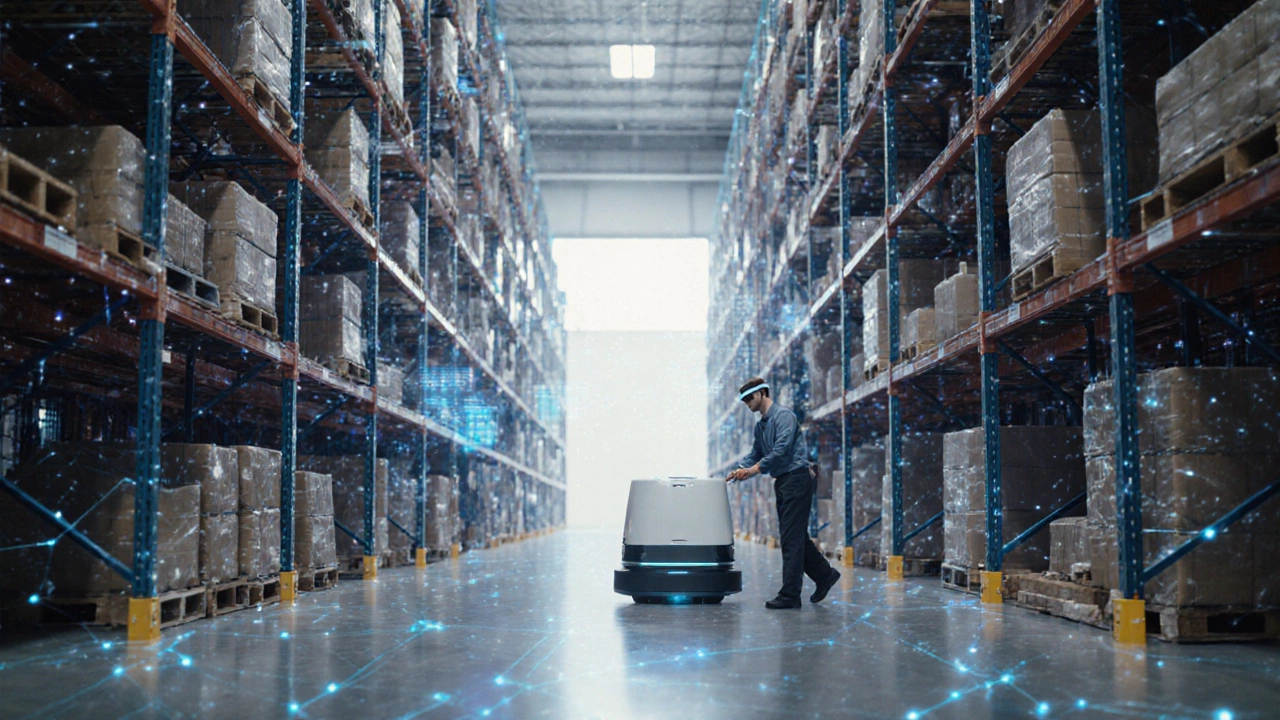AI in Logistics: Transforming Delivery and Warehouse Operations
When working with AI, artificial intelligence that enables machines to learn, reason and act on data. Also known as machine intelligence, it powers everything from predictive analytics to autonomous robots. In the logistics world, AI isn’t just a buzzword – it’s the engine behind faster order fulfillment, smarter inventory control and real‑time route tweaking. Think of AI as the brain that processes massive shipment data, spots patterns, and tells a warehouse robot where to place a pallet before a human even walks in. This brain‑centered approach reshapes how businesses move goods, cuts delays, and shrinks costs.
AI‑Powered Warehouse Management Systems
One of the most visible AI applications lives in Warehouse Management Systems, software platforms that coordinate storage, picking, and shipping tasks. Often shortened to WMS, these systems now embed machine‑learning models that forecast demand spikes, auto‑replenish stock, and assign labor in seconds. The AI layer learns from past pick‑paths and redesigns aisle layouts to reduce travel time by up to 30%. When a new SKU arrives, the system instantly predicts the optimal shelving spot based on size, turnover rate, and seasonal trends. This synergy between AI and WMS creates a feedback loop: better data improves AI predictions, and AI fine‑tunes WMS operations, resulting in smoother flow from dock to delivery van.
Beyond the warehouse, e‑logistics, the digital orchestration of order processing, inventory and transport relies heavily on AI to stitch together every touchpoint. AI ingests order volumes, carrier availability, traffic feeds, and weather alerts, then outputs a unified plan that balances speed and cost. For example, an AI engine can reroute a shipment on the fly if a highway closure pops up, notifying the driver and the customer in real time. This level of agility wasn’t possible with static routing tables; it’s a direct result of AI’s ability to process live data streams and make split‑second decisions.
Finally, AI drives delivery optimization, the use of algorithms to plan the most efficient routes and schedules for parcels. By analyzing historic delivery windows, customer preferences, and vehicle capacities, AI builds route clusters that cut empty miles and boost driver productivity. The system also predicts the likelihood of a failed delivery and suggests alternative time slots, reducing repeat attempts. When combined with crowd‑sourced driver networks or autonomous vans, AI‑based delivery optimization translates into faster last‑mile service and happier buyers. AI therefore sits at the heart of a logistics ecosystem that moves from the warehouse floor to the customer’s doorstep. These insights set the stage for the articles below, where you’ll find deep dives into AI‑driven insurance nuances, salary trends for tech‑enabled logistics roles, and practical guides to choosing the right warehouse software—all anchored in the intelligent future of supply chains.
Future Warehouse Technologies: Robotics, AI & IoT Trends for 2025
Explore the cutting‑edge warehouse technologies reshaping logistics in 2025, from robots and AI to IoT, digital twins, drones and blockchain, with practical tips and a clear implementation roadmap.
Read More